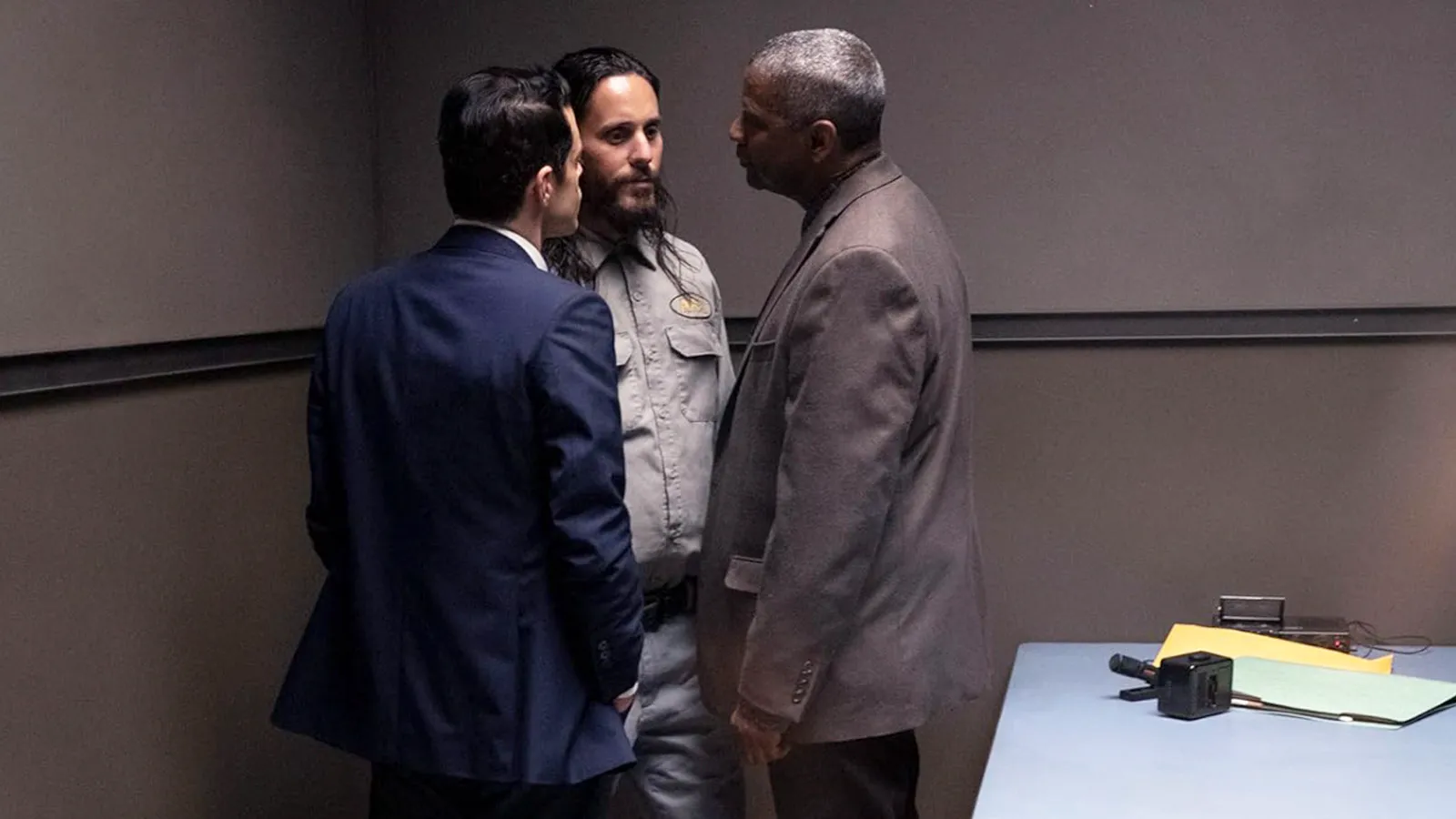In a remote field, Sparma takes Baxter with the promise of showing him the place where he buried a missing jogger. He points out several spots for Baxter to dig, but every time Baxter uncovers nothing. Sparma continues to taunt him, declaring, “I’ve never killed anybody in my entire life.”
He even suggests they return home if Baxter believes him. However, Baxter keeps digging. When Sparma brings up Baxter’s family, things take a dark turn. “You’re insignificant,” he spits at him. “You don’t matter. This will continue, and there’s nothing you can do about it.”

At this moment, Baxter loses control. He strikes Sparma with a shovel, killing him instantly. Deacon arrives shortly after, but it’s too late. Through flashbacks, we understand that Deacon has been haunted by a past case where he unintentionally killed one of the victims and later covered up the crime with a colleague’s help.
He decides to return the favour and directs Baxter on where to bury Sparma. Deacon goes back to the city, discards Sparma’s car, and packs up all his belongings in trash bags. When Deacon returns to the scene, he finds Baxter still digging rather than burying Sparma’s body.
Deacon warns him that Sparma will only haunt him if he makes a mistake. After parting ways, Deacon sends Baxter a red barrette, then burns Sparma’s belongings.
What is the Significance of the Red Barrette?
Earlier in the film, a jogger is followed by a car that looks like the killer’s, wearing a red barrette. Later, Detective Baxter meets with the parents of a missing woman, Rhonda Rathbun, who tells him that “When she ran, she always used a red barrette to hold her hair back.”
As the investigation progresses, Deacon breaks into Sparma’s apartment and discovers a box of newspaper clippings about the murders. Baxter asks Sparma if he has ever seen a red barrette, which has become a symbol to him—a key object that could link Sparma to the missing jogger and, by extension, the other killings.
At the film’s conclusion, when Deacon sends Baxter a red barrette, we first think that Deacon must have found it while cleaning out Sparma’s apartment. If that were the case, Baxter’s actions would seem justified, though not exactly legal. It would indicate that the killings might finally stop.
However, moments later, Deacon is seen burning a packet of barrettes, with the “Candy Apple” barrette missing. From this, we understand that Deacon purchased the red barrette to absolve Baxter of his guilt, sparing him from the years of torment that Deacon himself has endured.
The film ends with an ambiguous note, leaving the resolution unclear.
What is the Meaning of the ‘No Angels’ Note in The Little Things?
Towards the end of The Little Things, Deacon sends Baxter a red barrette along with a handwritten note that reads, “No Angels,” underlined for emphasis. What does this note mean? This message references an earlier conversation between the two detectives.
Deacon warns Baxter not to get too absorbed in the case, explaining that it is easy for officers to view themselves as the protectors of the victims. He suggests that this emotional attachment to solving the case can cloud their judgment, making them obsessed with delivering justice instead of focusing on the facts.
According to Deacon, they are not in “the angel business.” By sending Baxter the note “No Angels,” Deacon reminds his colleague to separate his emotions from the job. It serves a second purpose, too: the detectives are not angels, as they have sought justice in a manner outside the law.
Their form of justice is not pure and holy because it depends on something far darker.
Who Was the Killer in The Little Things?
The Little Things ends without solving the central mystery, leaving us to wonder whether Sparma was the killer. Most detective films resolve the question of who committed the crime, but this film is more concerned with the effect the case has on the two officers involved.
It leaves us questioning whether past mistakes should influence the future and how guilt can weigh on a person. While it’s natural to wonder if Sparma was the killer, the film doesn’t provide definitive clues to confirm this.
We know that Sparma followed the murders in the media, which the profiler suggests is something the killer would do. He left town shortly after the previous round of killings, and he’s known to ditch his cars. But ultimately, there is a more intriguing possibility that Sparma was not the killer.
He might be nothing more than a crime enthusiast, as he tells Baxter during his interrogation. If he isn’t the killer, this interpretation shifts the blame onto the police force, not only for killing an innocent man but for covering it up. This unsettling possibility mirrors real-life occurrences of police misconduct.
Is The Little Things Based on a Real Killer?
After watching The Little Things, one might wonder if Sparma was based on a real-life killer. His characteristics, such as being a loner, a crime aficionado, and somewhat unsettling, make him seem like a believable serial killer.

While Sparma is a completely fictional character, he was inspired by a real killer. John Lee Hancock, the writer/director, mentioned that his interest in serial killer stories came from his experience living in Los Angeles when Richard Ramirez, known as “The Night Stalker,” was terrorizing the city.
Hancock recalled the pervasive fear during that period, with everyone locking their windows and constantly talking about the killer. This real-life event influenced the creation of Sparma’s character, though he is not based on Ramirez specifically.
For those interested in a deeper comparison, Netflix’s Night Stalker: The Hunt for a Serial Killer offers a true crime documentary on the case.
What’s the Point of The Little Things?
Normally, in detective stories, we expect the mystery to be solved by the end, with the detective gradually piecing together clues to reveal the identity of the killer and explain the motives behind the crimes.
The Little Things, however, avoids offering this type of resolution, and that’s the main point of the movie. It shows that sometimes life doesn’t have clear answers.
The film asks us to confront the idea that we place too much trust in law enforcement to maintain order, even though they are just humans who can become obsessed with “the little things,” missing the bigger picture in the process.
Rather than simply telling a story of a serial killer, the film delves into the themes of guilt and justice. It challenges us to rethink what true justice is in a world where our institutions can fail us.
Deacon has been haunted by his past actions, and the film makes us question whether this guilt is worse than any punishment that could come from the legal system. When Deacon helps release Baxter from his guilt, is he dodging justice for Sparma? Does Sparma even deserve justice?
The Little Things leaves us without easy answers, prompting us to reflect on these difficult questions.



